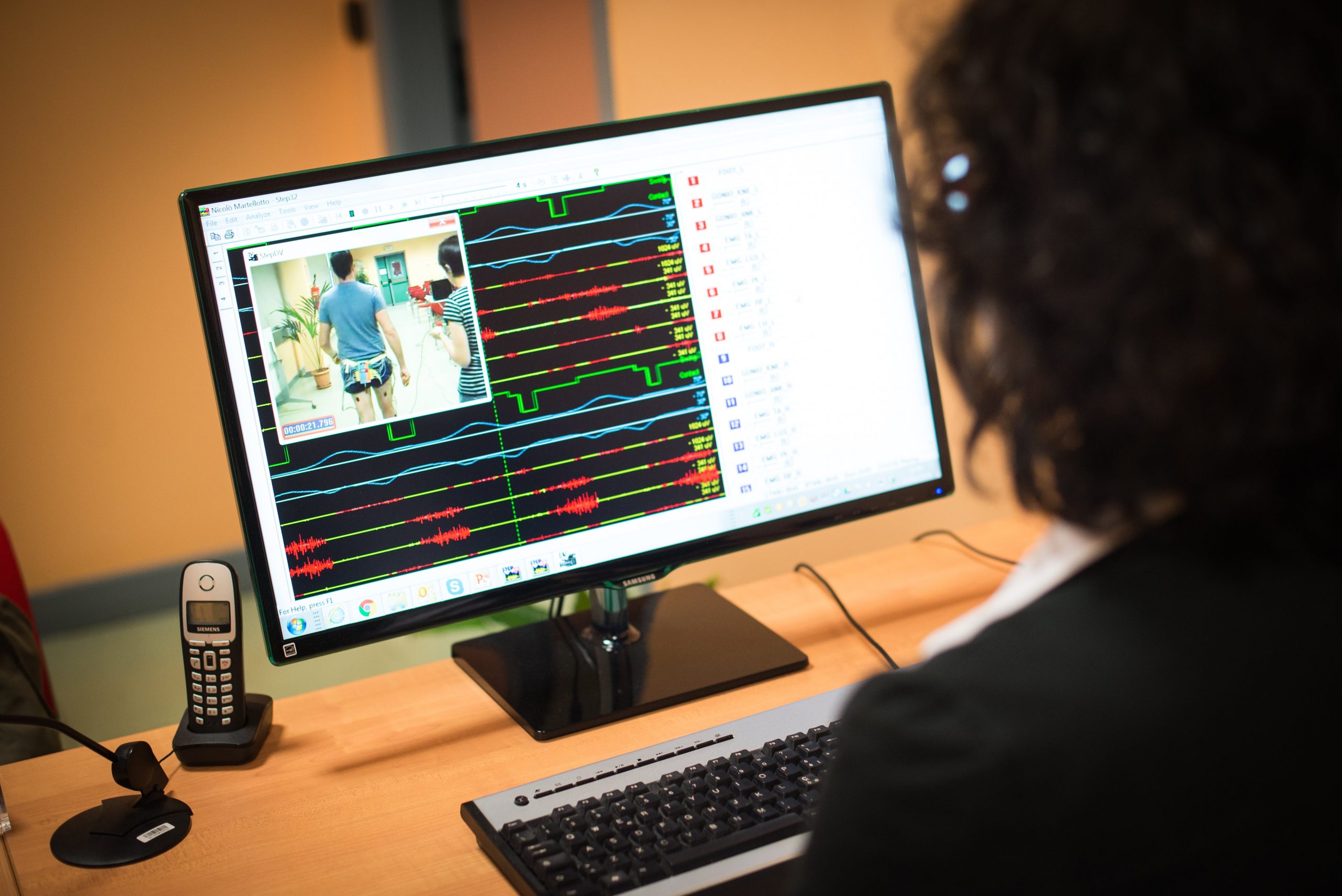
Topic:
Gait analysis is widely used in clinics to study walking abnormalities for surgery planning, definition of therapeutic and rehabilitation protocols, and objective evaluation of clinical outcomes. Among the principal applications of clinical gait analysis in orthopedics there are: pre- and post-surgery evaluation of total-knee replacement, total hip arthroplasty, and anterior cruciate ligament reconstruction. In patients suffering from neurological disorders, clinical gait analysis is a valuable tool in the quantitative assessment of their residual walking ability, to design rehabilitation interventions based on the patient’s specific needs.
Gait analysis provides objective, reliable, and repeatable measures of locomotion impairments through the acquisition and analysis of foot-switches, electrogoniometric, and electromyographic signals.
This research line is focused on the quantitative and operator-independent assessment of the walking ability in different pathological conditions.
People:
Recent publications:
V. Agostini, G. Balestra, M. Knaflitz
IEEE Transactions on Neural Systems and Rehabilitation Engineering
10.1109/TNSRE.2013.2291907
Agostini, V., Ghislieri, M., Rosati, S., Balestra, B., Dotti, G., & Knaflitz, M.
Medicine-Based Informatics and Engineering
10.1007/978-3-030-87845-0_2
V. Agostini, F. Lo Fermo, G. Massazza and M. Knaflitz
Journal of NeuroEngineering and Rehabilitation
10.1186/s12984-015-0079-4
V. Agostini, D. Ganio, K. Facchin, L. Cane, S. M. Carneiro and M. Knaflitz
The Journal of Arthroplasty
10.1016/j.arth.2013.12.018
Marco Ghislieri, Valentina Agostini, Laura Rizzi, Chiara Fronda, Marco Knaflitz, Michele Lanotte
Sensors
10.3390/s24206593